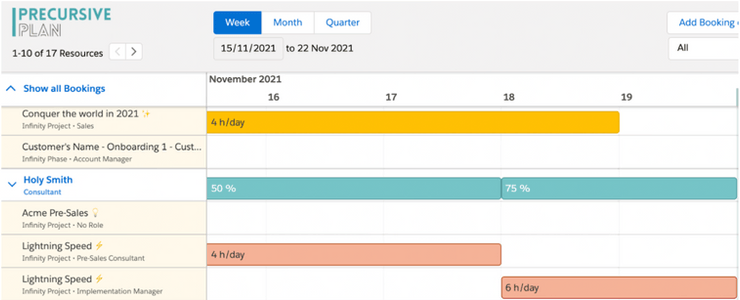AUTOMOTIVE TECHNOLOGY SERVICES DELIVERY IN 2022

The world of auto tech is evolving to be more similar to SAAS firms, and the service delivery teams in the space are looking to adapt accordingly into an environment where scalable and repeatable delivery is key when operating around customer experience rather than against it - but what exactly are the shifts and changes happening over the next 12 months to make these ideas into reality?
Here are the 5 things you need to prep your services delivery team for next year:
1. Virtual delivery and remote project management
Working and delivering projects remotely is something that is here to stay, with employees continuing to demand flexible working environments; in just one of the many studies conducted in 2021 on this topic, the Strathclyde Business School identified that 78% of people would prefer to work in the office for just two days or less per week.
Historically, dealerships and other similar businesses haven’t been at the vanguard of technology, and so a more hands-on, in-person approach has been required. But the remote-first business environment of the last two years has accelerated the digital adoption of the industry, making cloud technologies and deployments more viable, even necessary, than ever.
In order for teams to communicate and collaborate effectively, companies need to have a task management and resourcing system embedded into their daily routine. This will allow teams to monitor their capacity and outputs all within the same system.
Having a PSA tool within your organization will not only help your team to deliver virtually and achieve remote project management but will also allow managers to understand if your teams are delivering in the right way, this was illustrated well recently by Precursive webinar panelist CCO of Planful, Kimberly Simms:
“ Your teams will have different strengths and weaknesses, with effective capacity management you can also give your teams the opportunity to expand their skill set”
2. The new shift towards virtual delivery necessitating a high-velocity services delivery model
High-velocity services delivery has emerged as a new wave of SaaS companies outscale their peers and with that growth, their products are being implemented in faster timelines than ever before. Professional Services and Customer Success teams work together to form repeatable processes, which are key to repeatable delivery, likely the method you'll be required to adopt in our to cope with this growth. Therefore the line between these departments is becoming increasingly blurred. Within a HVSD environment, it is common for teams to be involved in high volumes of work and placement across multiple projects at the same time. This continuing shift is evident as within our most recent webinar, Fixing the Capacity Crunch, 87% of our attendees across the technology world stated they currently work in a HVSD environment.
At present, the portion of automotive technology following such a pattern is notably lower- however we expect this to be a year of playing catchup within the sector.
 The percentage of people adopting a high-velocity services delivery method (green) versus those that aren't (purple)
The percentage of people adopting a high-velocity services delivery method (green) versus those that aren't (purple)
Precursive empowers users to take control of HVSD, with the ability to assign multiple roles to the same resources as shown below in our Precursive plan, where a consultant is assigned multiple roles in Project Lightning Speed below:

Precursive Professional Services Automation
3. The continual merger of professional services with customer success
With the line between customer success and professional service teams already blurring, and this continuing into 2022, Professional Services teams will find themselves continuously involved and metric'd on many aspects of customer success, such as outcome realization or training. As the shift towards HVSD models continues with it, the need for the two teams to collaborate to form a repeatable process will only increase.
This trend is reflected in the growing presence of the CCO managing both the professional services and customer success teams. The blending of the departments is needed to service customer outcomes.
Peter Lyon, VP of Global Customer Success at Poppulo, supports the colliding of these two worlds having said in our Fixing the Capacity Crunch webinar:
“Services and Success working together is our new normal”
Precursive task management boards consist of repeatable project templates. These tasks encourage the blending of work from both professional services and customer success as they clearly mark the journey to the customer outcomes:
 Precursive task management
Precursive task management
4. Projects evolve and resources are spread thinly
As companies scale and onboarding becomes repeatable and therefore faster, capacity can become stretched. In order to ensure that teams are still working efficiently and meeting customer outcomes, department heads need to know exactly when too many projects become too many projects. This not only affects your customer outcomes but the morale and productivity of your teams.
The reality of remote working also means that resources are freer than ever to move on, working from new locations. Reuters confirms that over 40% of large UK businesses reported struggling to hire in September 2021. This struggle has increased by 8% since July 2021, according to the Office for National Statistics.
The best way to accurately understand the capacity of your teams in our remote reality is through the use of a resource management tool. Subscription to such a tool will allow your business to:
- Recognize the capacity of your teams remotely
- Understand when resources are busy vs productive busy
- Analyze the best way to further upskill and motivate your teams
5. Shorter time to market deadlines
In the age of convenience, customers are waiting to access the value of your products faster than ever. This means that your implementation timelines will get shorter and your time to market pressure will increase. Ensuring that you stay within your project timelines does not only mean correctly managing your team, but also managing the capacity of your customer. Customers not sending implementation documentation on time will have a domino effect on your project milestones.
The best way to combat this is to collaborate with your customer from the very beginning. Ensuring a true path to customer collaboration using a PSA tool that allows for a dedicated customer area. Will make your customer part of your project team.
So, how do you best prep your service delivery teams for 2022?
-
Ensure you have a PSA tool embedded into your daily operations. Making time for accurate and real-time resource planning and capacity management will set your team up for success.
-
Embrace the merge of your professional services and customer success teams by remembering that the blend will lead to greater customer satisfaction.
-
Collaborate with your customers! Ensuring your customers have an on-demand view of their project timelines and actions will keep your project milestones on track.


